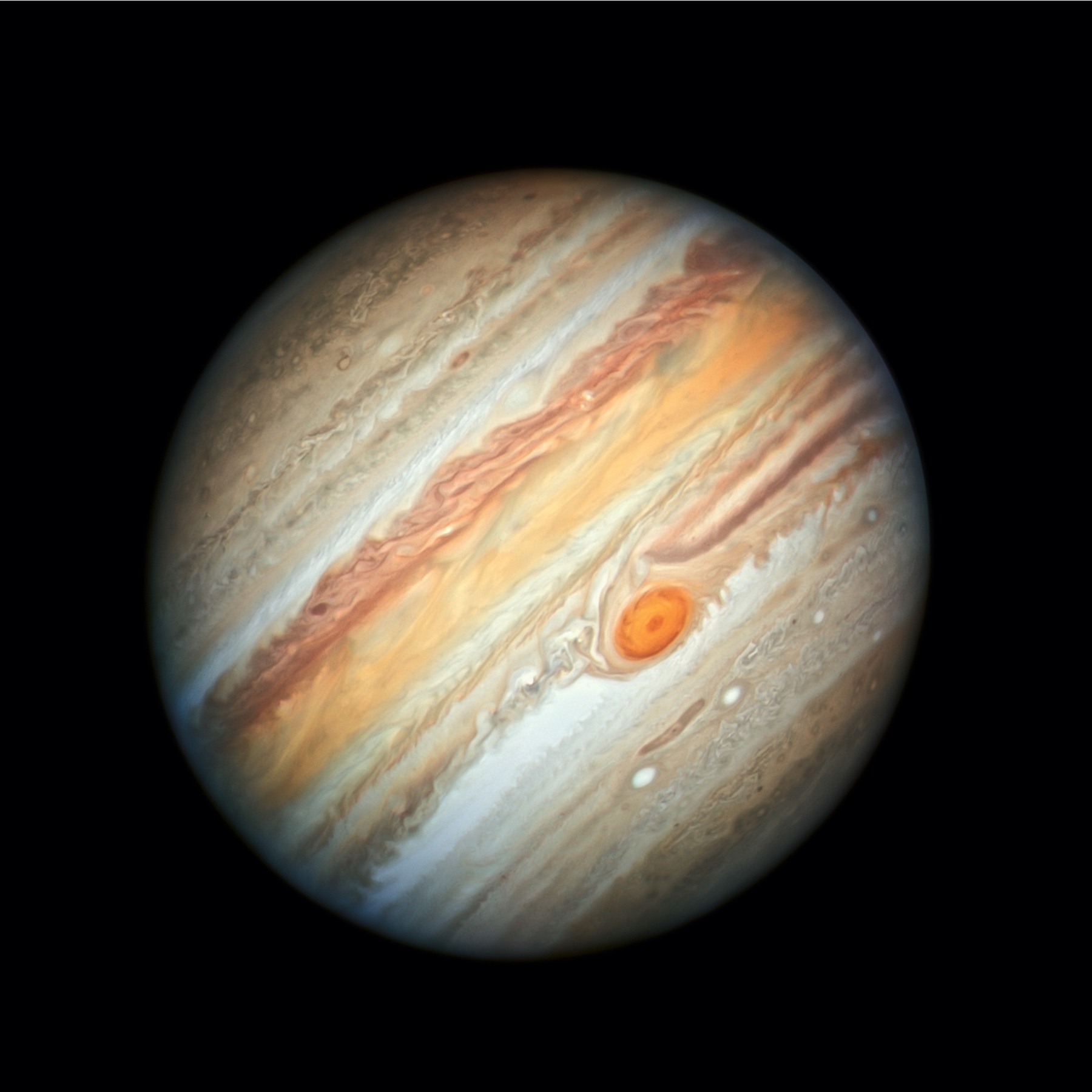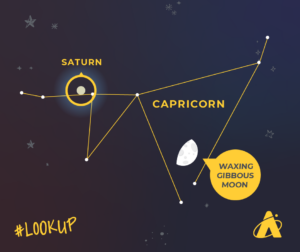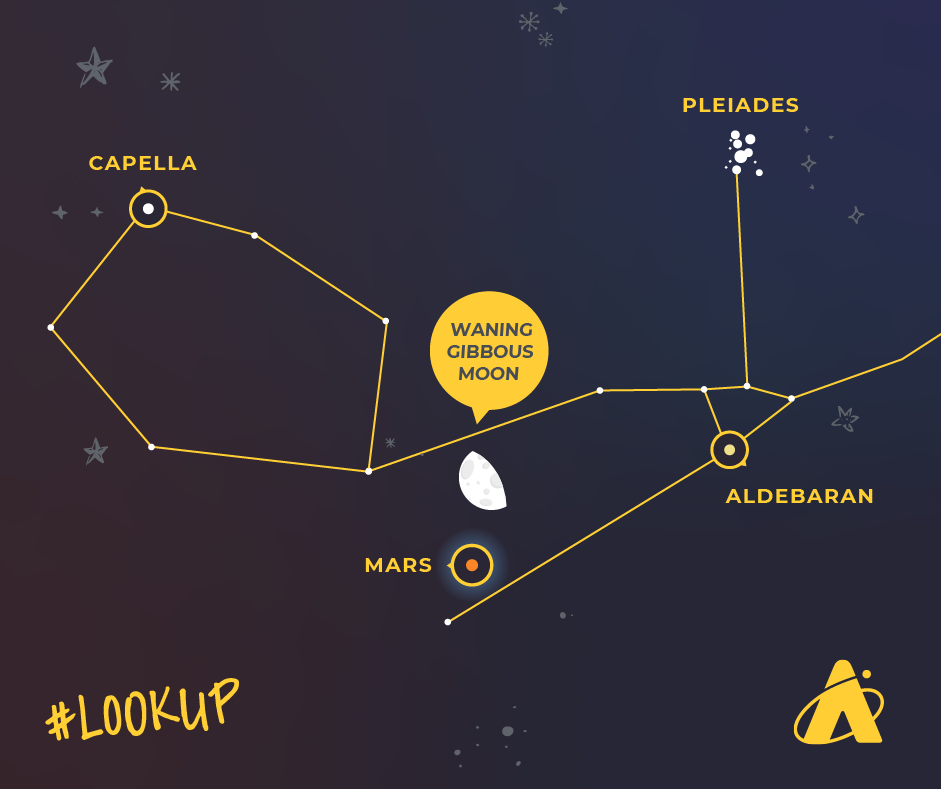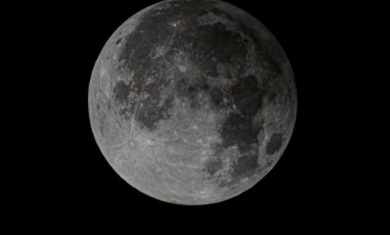Adler Skywatch: October 2022

Header Image: Hubble Space Telescope portrait of Jupiter taken on June 27, 2019. Image Credit: NASA, ESA, A. Simon (Goddard Space Flight Center), and M.H. Wong (University of California, Berkeley)
Jupiter and Saturn appear during evening twilight, Mars continues to get brighter, and Mercury just might be visible this month, October 2022. Here’s your stargazing guide for spotting daytime and nighttime celestial events.
Planets In The Evening
The planets Jupiter and Saturn shine in the early-evening skies this month. Shortly after sunset, look for bright Jupiter low in the eastern sky. About 40 degrees to Jupiter’s right is the planet Saturn, which is not as bright as Jupiter but still readily visible. As the night sky darkens, the planetary pair moves through the southern skies, with Jupiter getting higher in the sky than Saturn. On the evening of October 5 and the early-morning darkness of October 6, the planet Saturn appears near a waxing gibbous Moon. Two days later, on the evening of October 8 and the early-morning darkness of October 9, the waxing gibbous Moon appears near Jupiter. Saturn sets in the west-southwest around 2:00 am CDT at the start of the month, and around midnight by the end of the month. Jupiter sets in the west at the start of morning twilight early in the month, and around 4:00 am by month’s end.

The planet Mars rises in the east-northeast later in the evening. On October 1, it rises at about 10:00 pm, and by October 31 it rises at about 8:30 pm. For the past few months, Mars has been getting slightly brighter with each passing night; this month is no exception. Its brightness and its orange-y color makes it striking in the night sky. This month it appears to form a triangle with two similarly tinted red-giant stars. To its left is Betelgeuse, in the constellation Orion; and to its right is Aldebaran, in the constellation Taurus. Mars is brighter than either star this month. On the evening of October 14 and after midnight on October 15, Mars appears near a waning gibbous Moon. The planet fades in morning twilight high in the southwest sky.

Mercury In The Morning
The planet Mercury may be briefly seen from about October 7 through about October 23, extremely close to the horizon and slightly south of east, about 45 minutes before sunrise. To some extent, its visibility depends upon your own sightlines to the horizon and the clearness of your sky. However, for most of the month, the Sun appears too close to Mercury to be viewed safely, if at all. Looking directly at the Sun can result in permanent eye damage, so stop looking for Mercury when the sky gets bright.
The planet Venus appears very close to the Sun in the sky this month, so it is very difficult or impossible to see.
Eastern Hemisphere Eclipse
A partial solar eclipse takes place on October 25, but it’s not visible in North or South America. The eclipse tracks over portions of Europe, Africa, and Asia. In central Russia, the Moon will appear to briefly cover over 80 percent of the Sun. Again, to avoid permanent eye damage, never look directly at the Sun. Partial solar eclipses should be viewed only via indirect viewing methods or through special solar filters.
October’s Full Moon
This month the full Moon rises on October 9 around sunset. October’s full Moon is best known as the Hunter’s Moon. The name originated as this was the time of year Native Americans looked to October’s full Moon as a signal to begin gathering meat for the winter months.

Moon Phases
First Quarter Moon: October 2
Full Moon: October 9
Last Quarter Moon: October 17
New Moon: October 25
Please note that these descriptions are for the Chicago area, using Central time.
Subscribe To Skywatch Wednesday This October
Tour the night sky with the Adler Planetarium’s Theaters Manager Nick, who uses cutting-edge visualizations, NASA images, and astrophotography to show you what you can see in the night sky throughout the year.







